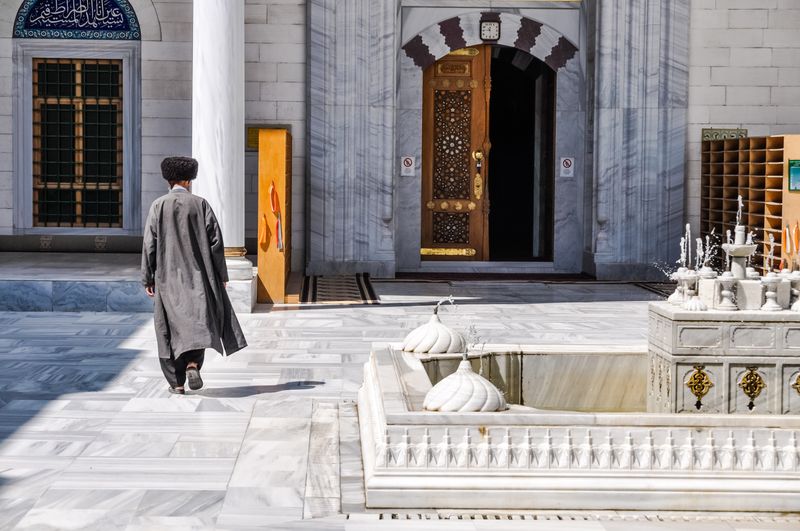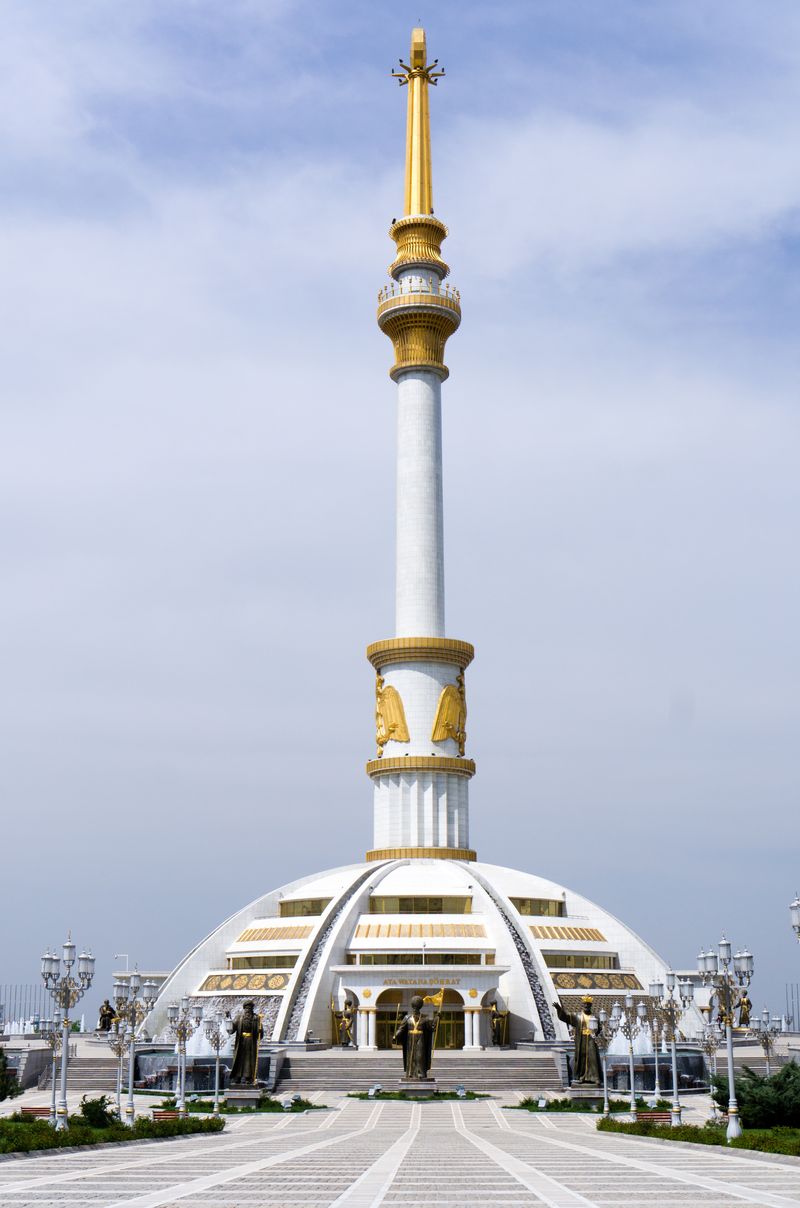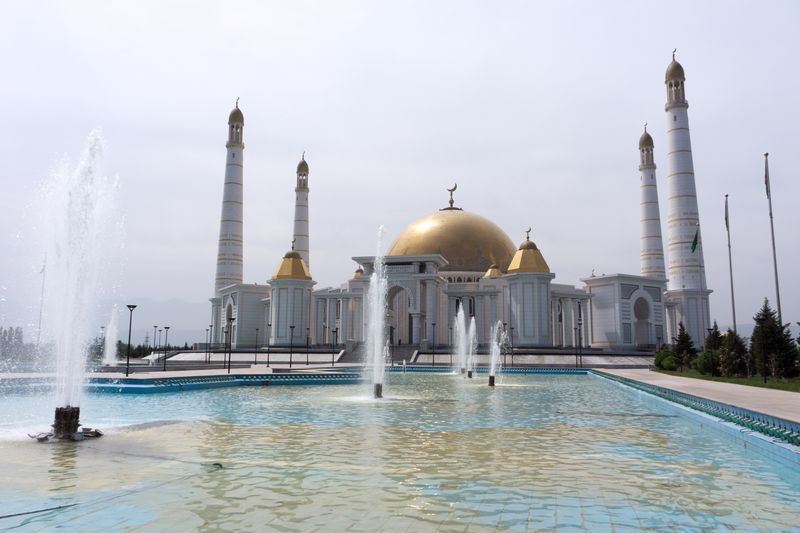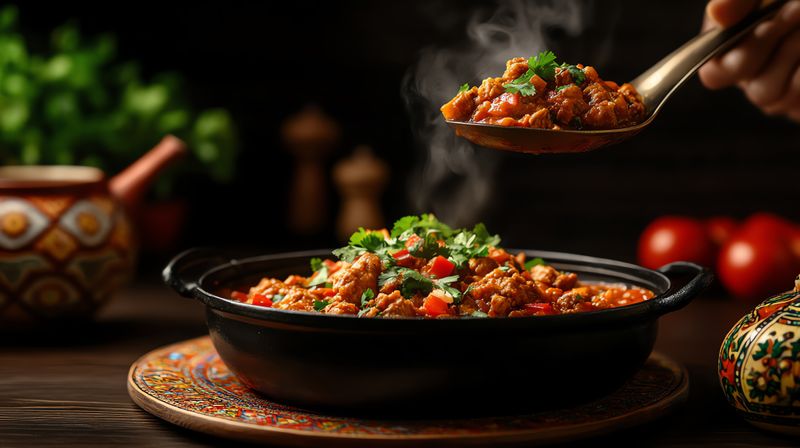A Glimpse into Must-See Ashgabat Attractions: Explore the rich history and sites of Turkmenistan tourism today
The Origins of Ashgabat: From Nisa to Modern Capital
The history of Ashgabat, originally known as Nisa, stretches back to ancient times when it was part of the Parthian Empire (247 BC–224 AD) and later the Seljuk Empire in the 11th century. The strategic location of Nisa made it an important stop on the Silk Road trade routes, where Buddhism, Zoroastrianism, and Greek philosophy intersected. The Parthians were known for their tolerance of multiple religions, and as a result, it became a centre of cultural and intellectual exchange.
During the Russian Empire's rule in the late 19th century, Nisa was renamed Poltoratsk, after General Poltoratsky, who played a role in the Russian conquest of Turkmenistan. The Russians introduced modern infrastructure like railways, roads, and water systems, which further facilitated existing trade and communication. It wasn’t until the 20th century, particularly after Turkmenistan became a Soviet Republic in the early 1920s, that the city (and the unique architecture in Ashgabat) began to take shape. The focus was now on rapid industrialisation, with new factories contributing to the city's growing economy. A heavy importance on education and science led to the construction of new schools, universities, and public buildings. Following Turkmenistan's independence in 1991, Ashgabat underwent a dramatic transformation under Saparmurat Niyazov, Turkmenistan’s first president. Niyazov’s vision for the capital was to transform it into a bold metropolis full of grand monuments with every last detail reflecting Turkmenistan’s independence. Inspiring Vacations has a number of tours that visit cities with a rich history and culture like Ashgabat.
The Rise of a Bold Metropolis
Turkmenistan tourism is enjoying positive growth, and today, the capital is a city that maintains a strict sense of order and cleanliness – you may notice mostly spotless, white cars on the road, and this is no accident! Niyazov's broader vision of order and perfection extends to the city’s motor vehicles. Visitors can expect to tour a safe city without the bustling tourist crowds found in other capitals in the region.
Ashgabat's development, like the rest of the country, has continued into the 21st century. Still, despite its modern, futuristic appearance—white marble buildings (hence Ashgabat’s moniker, ‘The White City’), broad avenues, and grand monuments—the city retains a sense of tradition through local customs and cultural values that connect it to its past. Influences from its Soviet era and Turkmen history are reflected in the city’s monuments and architecture.
Ashgabat Attractions: Symbols of National Identity
Ashgabat has grand boulevards and monumental squares down pat—and they’re as striking as you’d imagine. Many buildings are neoclassical style and elaborately adorned with Turkmen elements like gold accents, while statues, often of national figures of importance, keep a watchful eye over city squares.
The Arch of Neutrality
The Arch of Neutrality, one of the most iconic landmarks in the city, is a 75-metre-high gold monument erected to celebrate Turkmenistan’s policy of neutrality, which was endorsed by the United Nations in 1995. A statue of President Saparmurat Niyazov sits on top of the arch and rotates so it faces the sun throughout the day, a symbol of the country's focus on growth, prosperity, and positive relations with the rest of the world. Its location at the heart of Ashgabat ensures it's a fundamental part of the city’s landscape.
The Neutrality Park and Monument
The Neutrality Park and Monument, on the other hand, is a green retreat from Ashgabat's grandiose architecture and is adjacent to the Arch of Neutrality. The park’s design with ample gardens, fountains, and walking paths, is symbolic of the peaceful coexistence that Turkmenistan seeks to promote both internally and on the international stage.
The Independence Monument and National Celebrations
Another striking structure in the heart of the city is the Independence Monument, which celebrates Turkmenistan’s independence from the Soviet Union in 1991. It features a golden statue of the president on top of a 118-metre towering column. The base of the column is in the shape of a yurt, which is said to represent the country’s nomadic roots. Surrounding the monument are 27 statues of significant figures in Turkmen history. The surrounding square is a central public space used for national ceremonies, celebrations and events. The grandeur of the monument is especially beautiful at night when it’s illuminated: the stellar view of both the monument and landscape is breathtaking.
Turkmenbashi Ruhy Mosque and Mausoleum
Located just outside the city centre is the Turkmenbashi Ruhy Mosque and Mausoleum, also known as the Gypjak Mosque, which was built to honour President Niyazov. This site is visited on the Ashgabat city tour on our 22 Day Five Stans Unveiled tour, and the mosque is a beautiful example of modern Islamic architecture. It’s as lavish as you may expect: entirely made from white marble with a golden dome that was designed to be visible from a distance. The president was laid to rest in the mausoleum in 2006 and continues to be a pilgrim site for his supporters today. In addition to it being a site of national and cultural significance, the mosque is a place of worship today.
A Snapshot of Local Life: Markets, Festivals, Food
Alongside sites of national significance, no Turkmenistan travel guide (or visit) is complete without local shopping spots. Tolkuchka Bazaar, the largest and most famous open air market in Ashgabat, sits just on the outskirts of the city. The bustling market offers a look at everyday life and the country’s culture as a whole. Like bazaars the world over, Tolkuchka is a place where you can find anything and everything: Turkmen rugs, handicrafts, silks and other fabrics, rice and spices, and fruit and vegetables. It even has a camel market. The bazaar’s lively atmosphere (especially evident on Sundays) is an experience in itself—a sensory overload of spruiking vendors and bargain-hunting buyers awaits!
Traditional Craft with Deep Roots
And if you’re interested in purchasing a special memento of your visit, Turkmenistan is known for its beautifully intricate carpets, the Turkmen Carpet Museum is the perfect place to learn more about the art form, meet artisans, and view some 2,000 carpets across 15,000 square metres. Look out for the smallest carpet which is shaped like a key box and the largest, a Guinness World Record holder at 301 square metres. Although carpets serve a practical purpose as both floor coverings and wall decorations, carpet-making is deeply embedded in the social and cultural fabric of the Turkmen people. As such, it was inscribed on UNESCO’s Intangible Cultural Heritage list in 2019. Popular Turkmenistan festivals celebrating traditional art include Carpet Day which falls on the last Sunday of May. The event features exhibitions, live demonstrations, and competitions where carpet weavers can display their craftsmanship and share techniques passed down through generations.
The country’s cultural traditions are not limited to its carpets alone of course, and just as Ashgabat's landscape is ever-evolving, so too are its many flourishing industries.
Traditional Turkmen Tea and Coffee Culture
For centuries, Ashgabat and the wider Turkmen culture have been known for its infamous tea-drinking traditions. Tea ceremonies are woven into the fabric of everyday life, where offering a cup of chay symbolises hospitality and warmth. Tea houses (known as chaykhana) have long been spaces for socialising, where people could enjoy a break in their day and enjoy tea served in delicate glass cups. This tea ritual remains deeply cherished in the city but with Ashgabat’s modernisation, coffee drinking has made a noticeable entry onto the scene.
While espresso-based drinks like cappuccinos and lattes are commonly found in coffee shops throughout Ashgabat, the city's coffee culture has adopted a creative and distinctively local twist on these traditional beverages. The use of spices inherent to Turkmenistan cuisine—cinnamon, cardamom, and saffron, for example—are added to make a warming drink. For example, saffron coffee—made by infusing a small amount of saffron in an espresso—blends deliciously with the sharpness of the coffee and subtle floral notes of saffron.
And no visit to Ashgabat would be complete without experiencing the vibrant street food scene. Street vendors across the city offer quick tasty snacks (like kebabs on sticks), and markets and smaller food stalls also offer homemade honey and dried fruit.
After dark, the city's food scene transforms the streets to a buzzy atmosphere complete with food carts and stalls. Whether you are nibbling on freshly baked pide bread, sipping on a cup of fragrant herbal tea, or indulging in a sweet date-filled dessert, the street food in Ashgabat promises a sensory experience reflecting the warmth and hospitality of the Turkmen people.
Street eats to try include samsa, a savory pastry stuffed with lamb or beef, onions, and spices; skewered grilled vegetables (often made up of peppers, tomatoes, and eggplant), provide a delicious veggie partner to the grilled meat, and pide, a boat-shaped, savory Turkish flatbread topped with minced meat, vegetables, or cheese is a really common and beloved street food snack.
Swapping street food for a restaurant meal, you’ll notice that at the heart of Ashgabat's dining scene is traditional Turkmenistan cuisine, known for its hearty and flavourful dishes, like lamb, rice, and fresh vegetables. A staple in Turkmen households and on every restaurant menu is plov (pilaf), a tasty rice dish made which is often served during celebrations and gatherings.
Aside from the rich local dining on offer, a variety of international cuisines are now available in upscale restaurants. Turkish and Persian restaurants are particularly popular in Ashgabat and for those craving a more European experience, a number of Italian restaurants offer pizza and pasta, with Western-style cafés serving everything from sandwiches to salads and gourmet coffee, making Ashgabat's dining scene more international than you may expect.
What to Expect on a Visit to Ashgabat:
- Interesting History: Explore ancient landmarks dating back to the Parthian and Seljuk empires.
- Modern Marvels: Marvel at grand monuments and white marble buildings.
- Cultural Sites: Visit the Turkmenbashi Ruhy Mosque and Tolkuchka Bazaar for a taste of local life.
- Iconic Landmarks: See the Arch of Neutrality and Independence Monument, symbols of Turkmenistan’s independence.
- Delicious Cuisine: Try street foods like samsa, pide, and local coffee with a twist.
- An Orderly City: Enjoy a quiet, well-maintained city with a relaxed atmosphere and little tourist crowds.
Inspired to travel to Ashagbat? Our 22 Day Five Stans Unveiled tour takes in the exciting Turkmenistan capital city as well as Uzbekistan, Tajikistan, Kyrgyzstan and Kazakhstan.




